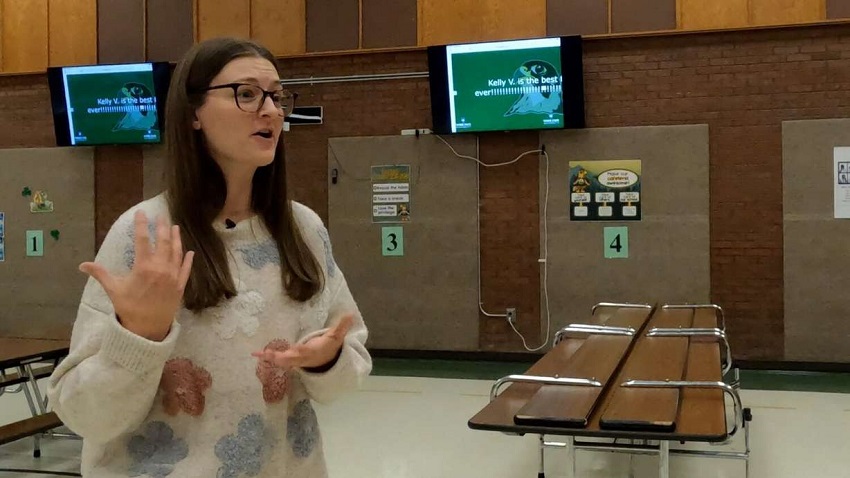OGDEN, UTAH — A growing initiative is bringing a wave of positivity to students, encouraging them to share compliments and uplifting messages with their peers. The program, known as “Kindness Walls,” aims to promote kindness both in school communities and in the digital world.
Sponsored by Weber State University, Kindness Walls have expanded to 375 schools across Utah, Idaho, and Wyoming. The program’s goal is simple: foster an environment where students can learn to spread positivity and appreciation online, counteracting the often negative atmosphere that can dominate social media platforms.
In today’s digital age, social media can often feel like a breeding ground for negativity. With many platforms driven by controversy and competition, it can be difficult to find spaces for uplifting content. However, the Kindness Walls program is working to change that narrative by providing a positive alternative.
Madeleine Homer, a social worker at Sprucewood Elementary in the Canyons School District, was introduced to Kindness Walls last fall. She was immediately drawn to its potential impact on students.
“What I think is really cool about it is that it gives kids a really positive view of how they could maybe potentially use social media in the future,” Homer said.
The setup of the Kindness Walls is simple but effective. Two screens are placed in the cafeteria, with the primary focus on fourth and fifth graders. The fifth graders, in particular, are at a stage where many are beginning to explore social media and digital communication. This makes the program particularly timely.
Students use their laptops to access the program at youuplift.com, where they can submit positive messages for their peers. Once approved, these messages appear on the screens, and students are excited to see their names displayed with words of encouragement.
“The kids, when they see their name pop up during lunch, there’s like, cheers and screams. The kids get excited for each other,” Homer explained. “It’s contagious.”
All the messages are written by the students and directed toward their peers. The focus is on spreading kindness, and the effect has been clear in the school community. Homer noted that students are not only eager to participate, but the positive messages have created a ripple effect.
“It’s so nice to see how the kids are really excited about the program and how it creates this supportive environment in the school,” Homer said. “They really start to focus on what’s good about each other.”
The program has become a key part of the school’s culture, especially for fifth graders who are starting to interact more online. By introducing kindness in this early stage of digital communication, the hope is that students will carry these lessons with them as they navigate social media in the future.
Kindness Walls is made possible through a state grant, meaning it’s free to all K-12 public schools. Interested schools can learn more about the program and how to implement it through youuplift.com.
As more schools adopt Kindness Walls, the hope is that students will continue to share positivity not just in their school communities, but also beyond. In a time when negativity can often dominate online interactions, this program is helping cultivate a generation that values kindness and support over conflict and criticism.

